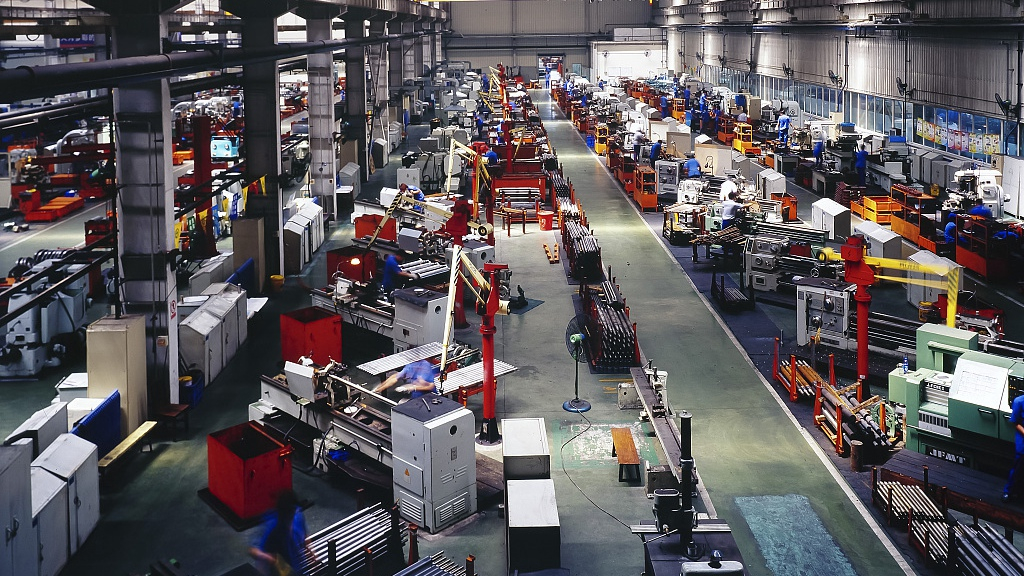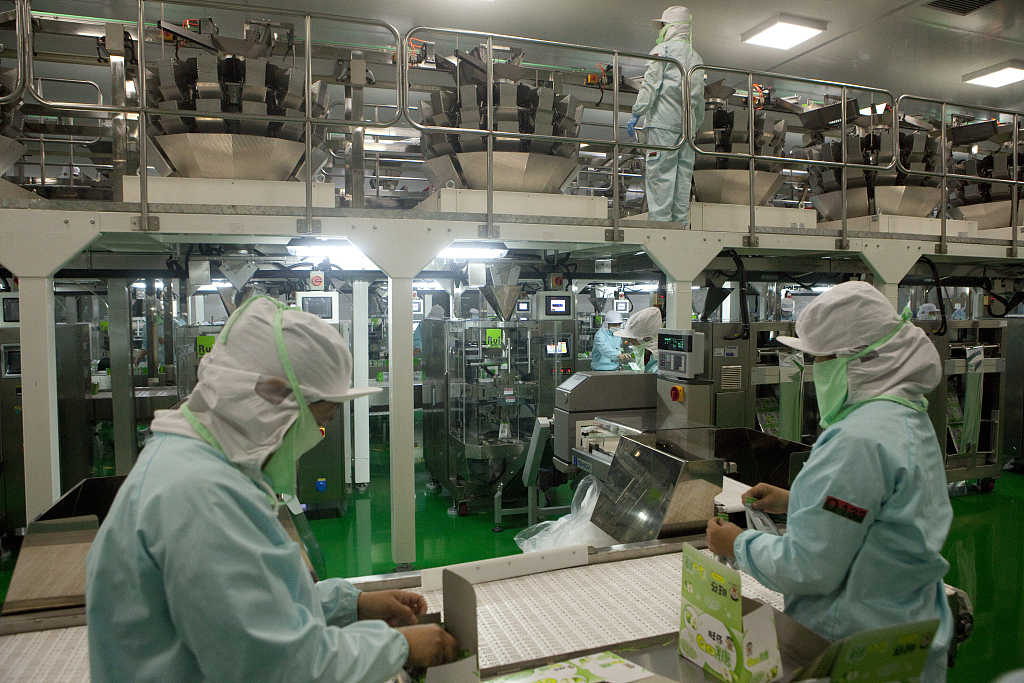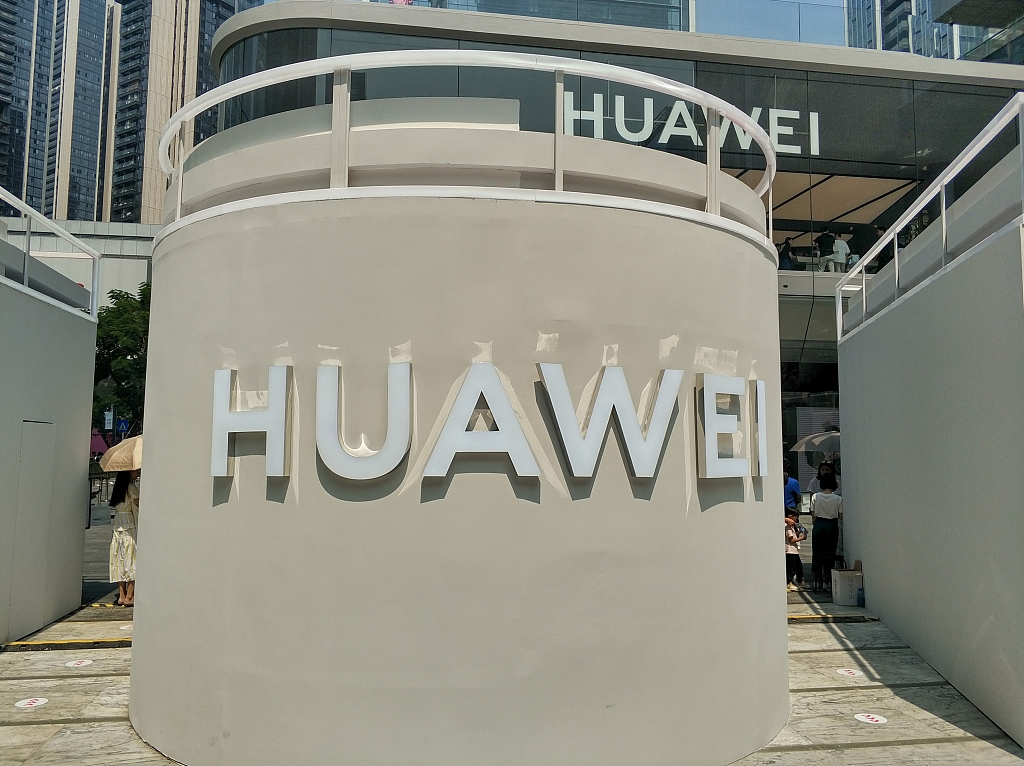
Editor's note: Huang Yongfu is a senior fellow at the International Cooperation Center (ICC) of the National Development and Reform Commission of China. The article reflects the author's opinions and not necessarily the views of NDRC and CGTN.
October 8 observed the latest development on the U.S. threat to disentangle the U.S. and China entirely and create two distinct economic systems.
The U.S. Commerce Department just added 28 Chinese institutes and companies to a blacklist of firms, including eight companies in the field of artificial intelligence. This is the fourth time Chinese firms were added to the list since Huawei and its affiliates were blacklisted on May 16.
The Trump administration has aggressively unleashed a new economic arsenal to ban Chinese firms from using its intellectual property and financial system for national security reasons.
The hawks in the White House believe that blocking China's access to U.S. technology would slow China's long-term development and cause China's economy to crumble.
Such a belief could be a bit of a long-shot.

People are working on the production line in Quanzhou, China's Fujian Province. /VCG Photo
People are working on the production line in Quanzhou, China's Fujian Province. /VCG Photo
Huawei and other Chinese tech companies can weather U.S. tech sanctions
After Trump restricted the export of American technology to Huawei, some western analysts bumptiously argued that Huawei could be crippled, especially in its overseas markets and its financial position could worsen.
Some critics worry too much that Huawei's Mate 30 series launched on September 19th in Munich and its successors are bound to flop, because they lack the latest versions of Android, and popular apps such as Gmail, Google Maps, YouTube or, crucially, Google Play Store from which apps like WhatsApp, Instagram, and Facebook can be easily downloaded.
Huawei is hardly on its knees. In spite of the strain to replace the suppliers or develop the software it can no longer get from America, the company is becoming comprehensive and able to make every component it used to get from abroad.
Huawei's contingency plan shows that American sanctions can do little to hobble it. A few years ago Huawei made a conscious "Plan B" to become less dependent on American technology, that included stockpiling crucial components.
It has found alternative sources for most components that are unaffected by the U.S. blacklisting and is developing replacements for three network-infrastructure business areas, in particular, Android operating system, server chips designed by HiSilicon within Intel, and Windows from Microsoft.
Although relationships with large Western banks such as HSBC and Standard Chartered have been disrupted, Chinese national banks, such as the Chinese Development Bank, remain willing to extend credit if needed.
Huawei is sitting on a pile of spare cash of 36 billion U.S. dollars. It has secured as many as 50-60 5G contracts at home or in countries that are not close American allies, expecting the growth of its revenues to be stable.
Investors feared that knock-on effects from the ban might hurt other Chinese tech businesses.
In the short run, China's hardware-manufacturing industry depending on American components that cannot easily be sourced from elsewhere or produced at home will undergo some tense and difficult time.
However, in the long run, the decoupling may hasten China's race to develop an indigenous capacity to supply every vital technology needed, and ultimately increase the independence of China's burgeoning technology ecosystem from America's government and enhance China's self-sufficiency and tech prowess. Industrial upgrade is expected to be accelerated in China with supply chains being restructured.

The logo of Huawei. /VCG Photo
The logo of Huawei. /VCG Photo
Chinese industrial upgrade is accelerated
Recently, some western critics seem excited that China is getting absolutely decimated in the sense that U.S. businesses are leaving China to other countries to avoid tariffs is sounding the death knell for China's role as the world's manufacturing workshop.
No doubt Trump's tariffs on China have threatened the Sino-U.S. commercial ties decades in the making and pushed both Chinese and U.S. businesses to undergo one of the most tense and confusing periods.
It is no surprise that U.S. businesses that make Crocs shoes, Yeti beer coolers, Roomba vacuums, and Lovesac Furniture are looking seriously at shifting production and supply chains to other countries as U.S. tariffs fly.
However, those deeply entwined with Chinese manufacturers and consumers will remain rooted in China, for example world's clothing giants and electronics business, while China's high-tech industries are booming.
Many companies, such as Cisco Systems Inc., have built up supply chains in China that can't be uprooted overnight. Shifting production out of China would entail halting production for months, re-engineering production facilities and shifting shipping arrangements, which are massively disruptive and financially devastating.
More importantly, no other country has China's huge relatively skilled workforce, infrastructure and easily identifiable supplier or manufacturer for crucial components from electric scooter services to robotics businesses.
Over the past decades, China has gone from laggard to world-beater in both visible and invisible technologies. China has the edge in the unique blend of scale, speed, and agility.
China's electronics-manufacturing capacity accounts for half of the world total, going beyond sheer scale to diversity and sophistication of products. The pace of hardware innovation in Shenzhen surpasses even that in Silicon Valley.
China has world-beating online retailers, "social-commerce" innovators and nimble manufacturers with specialized machinery and experienced operators.
With its skilled labor force, highly automated mills, high value-added and excellent infrastructure, China's "cheap" sourcing model has been upgraded to "high-tech" sourcing model, having continued strength in numerous sectors.
Most of the world's giants are increasingly preoccupied with scale, speed, and agility more than cost. Together with its vast and fast growing domestic market with rising middle class, China remains the leading investment destination in the world.
Finally, the cost of rupture will not just be born by China. There is little evidence that U.S. manufacturers have brought production from China back to the U.S., a move the Trump administration hoped the tariffs would encourage.
In the meantime, the economic decoupling results in sagging market shares for U.S. businesses in China evidently, implying that abusing America's awesome power and advantage in digital economy so clumsily, may render the loss of its own dominance before too long.
(If you want to contribute and have specific expertise, please contact us at opinions@cgtn.com.)